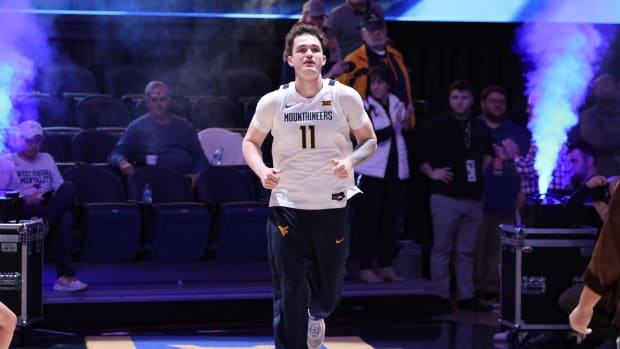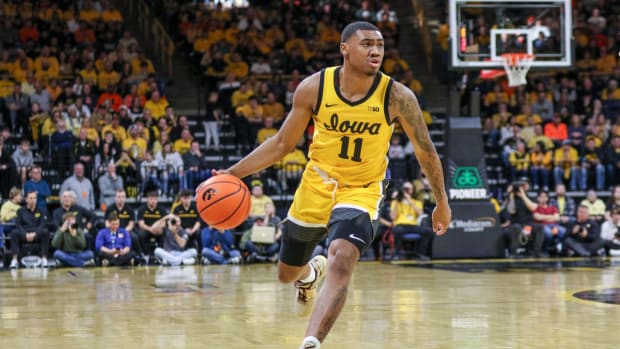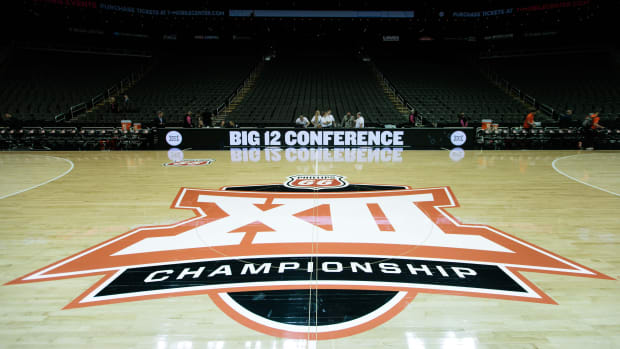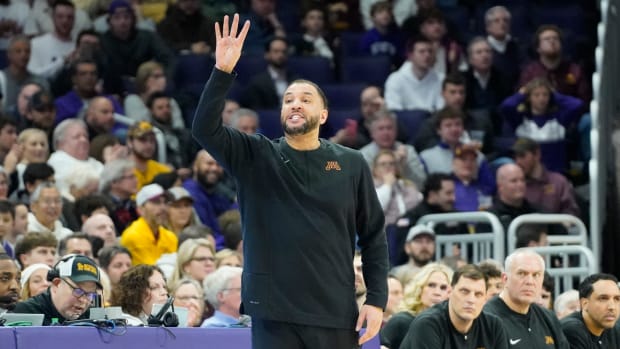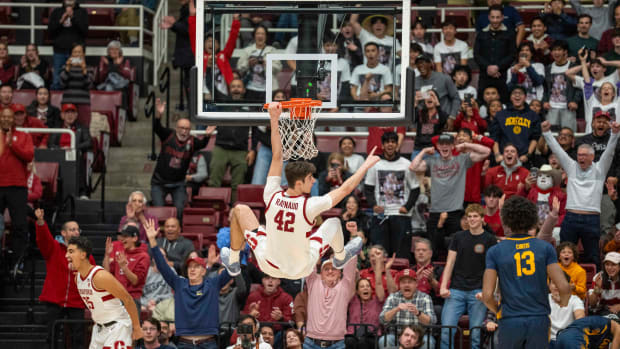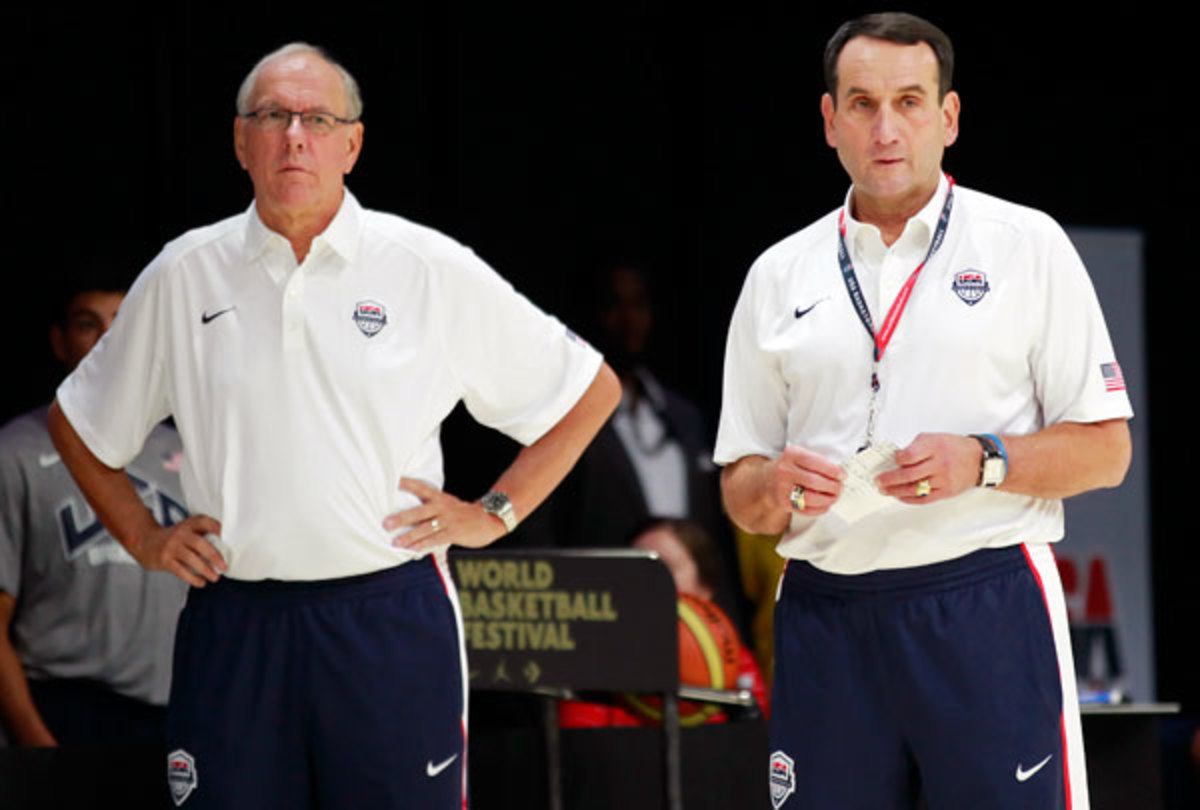
What will it take for the ACC to be the 'best conference in history'?
Jim Boeheim and Mike Krzyzewski will be in the same conference starting next season. (Geoff Burke/US Presswire)
Almost as an afternote during the confirmation of his reappointment as U.S. national team coach on Thursday, Duke's Mike Krzyzewski threw out the following affirmation of the newly expanded ACC:
"We're going to be a 10-bid conference,” Krzyzewski said of a league that is adding Syracuse, Notre Dame and Pitt this season and Louisville next season. “We're going to be the best conference in the history of the game."
The number included in the first part of that quote is fairly gaudy, but the Big East got 11 of its 16 teams into the NCAA tournament as recently as 2011, so it wouldn't exactly be setting a precedent. All of the ACC's newcomers are arriving from the Big East and have lengthy histories of NCAA tournament attendance, and all of them also have outstanding home-court records, a key to lifting RPIs throughout an entire league and sneaking more middling teams into the dance.
Of course, it's the second part of the quote that has everyone around college hoops buzzing. But as ESPN.com's Eamonn Brennan (and others) have pointed out in various ways, it's impossible to determine what 'best' means in this context. Was Coach K alluding to the league's top-to-bottom regular-season strength? Top-end quality? How many NCAA bids it gets? Whether one of its teams wins a national title? Fans can parse this statement in any number of ways and find a way to argue if it's "right" or not, depending on the parameters.
Still, what we can do is take a quick dive into the last 20 years of conference performance (data from BBState.com) vis-à-vis the NCAA tournament and at least cobble together a picture of what a great conference season looks like, providing a mark for which the new ACC can aim. The following table shows the "best" season for each of the six historically major conferences, taking into account what percentage of the league got in, how well it collectively performed against seed, how deep its teams' individual runs were and whether its performance backed up its regular-season status that year.
Fans can argue that other seasons were the "best" in each respective league, but as a group, these six seasons offer pretty good benchmarks to work off when projecting expectations for the future ACC:
In three of the six example seasons above, the league's Performance Against Seed Expectations (PASE) was at least four or more wins greater than expected, per the table from Pete Tiernan's BracketScience, which shows win expectancy for all 16 seeds in an NCAA tournament. In two of the other examples, the PASE was below two -- basically, the league achieved to expectations -- but those were in cases in which strong regular seasons yielded strong NCAA seeds and the leagues' teams then backed up that seeding with deep runs in the NCAAs.
While getting 10 of the conference's soon-to-be 15 teams into the dance would constitute an outstanding season for the ACC, that's not the only component that can play into the "best league ever" debate. There are a whole bunch of variables involved, and those play out over more than one season. That said, based on the best of the best seasons from leagues over the past two decades, we can project this is what the ACC would need to accomplish in order to enter the conversation:
Eight or more NCAA bids, at least three Elite Eight teams, at least two Final Four teams and a national champion, with overall performance against seed expectations at least being positive.
With programs like Duke, North Carolina, Syracuse and Louisville leading the way, the ACC has four top-10 national programs as its core. Programs like Pitt and (more recently) Notre Dame have become consistent contributors to both top quality and quality of depth in a league. Whether the ACC can ultimately become the "best league ever" will depend on how the others maintain and grow. Florida State, Miami, Clemson and Georgia Tech, among others, have all had their moments, but for the conference to legitimately be considered the best, the "new bottom half" will have to round into more consistent shape.

